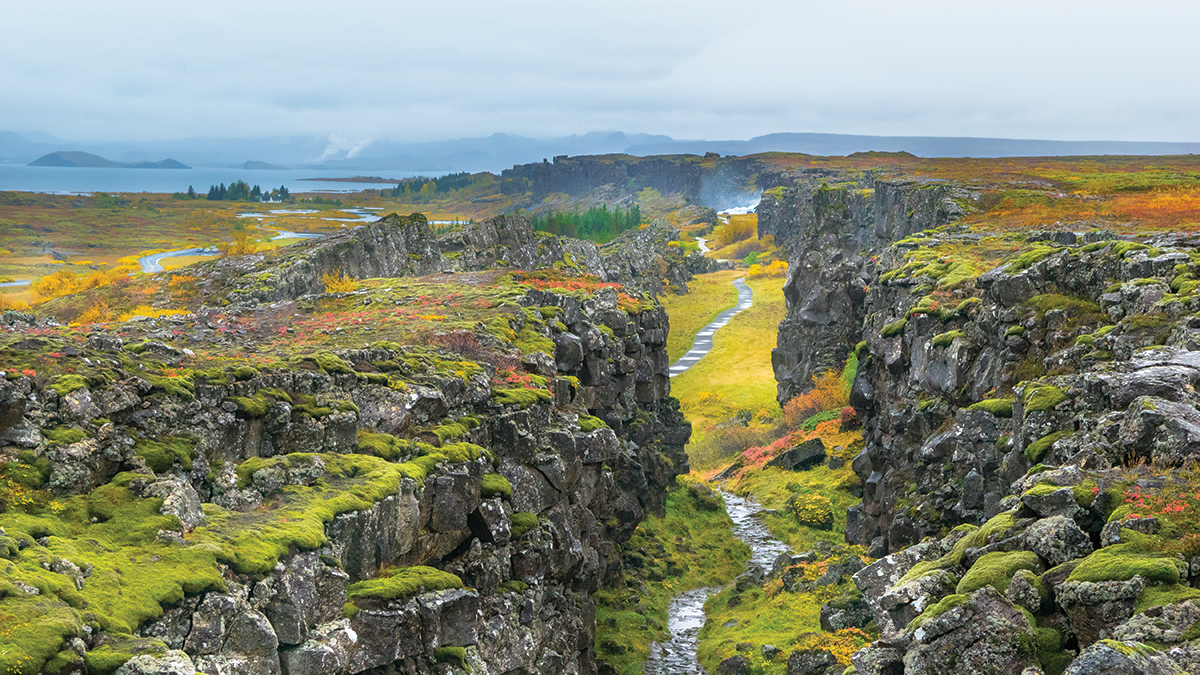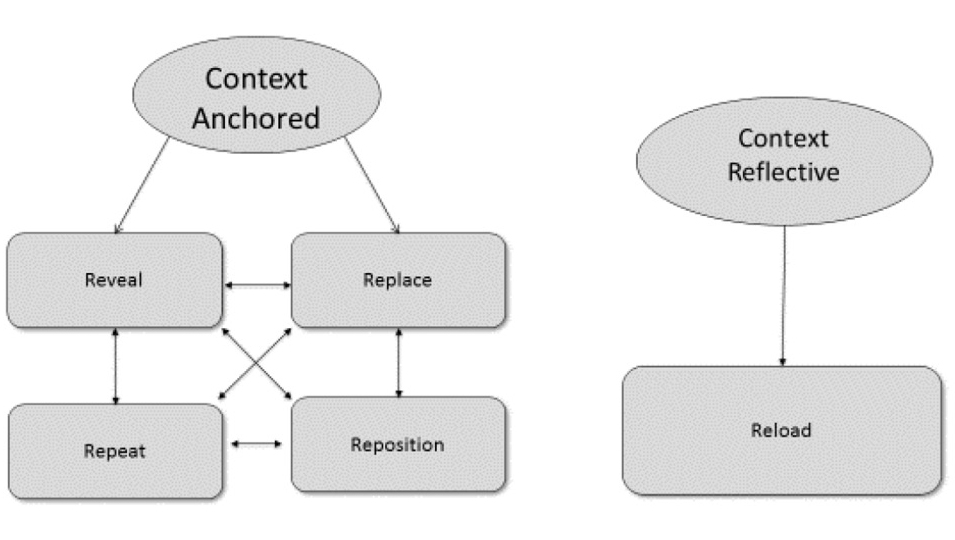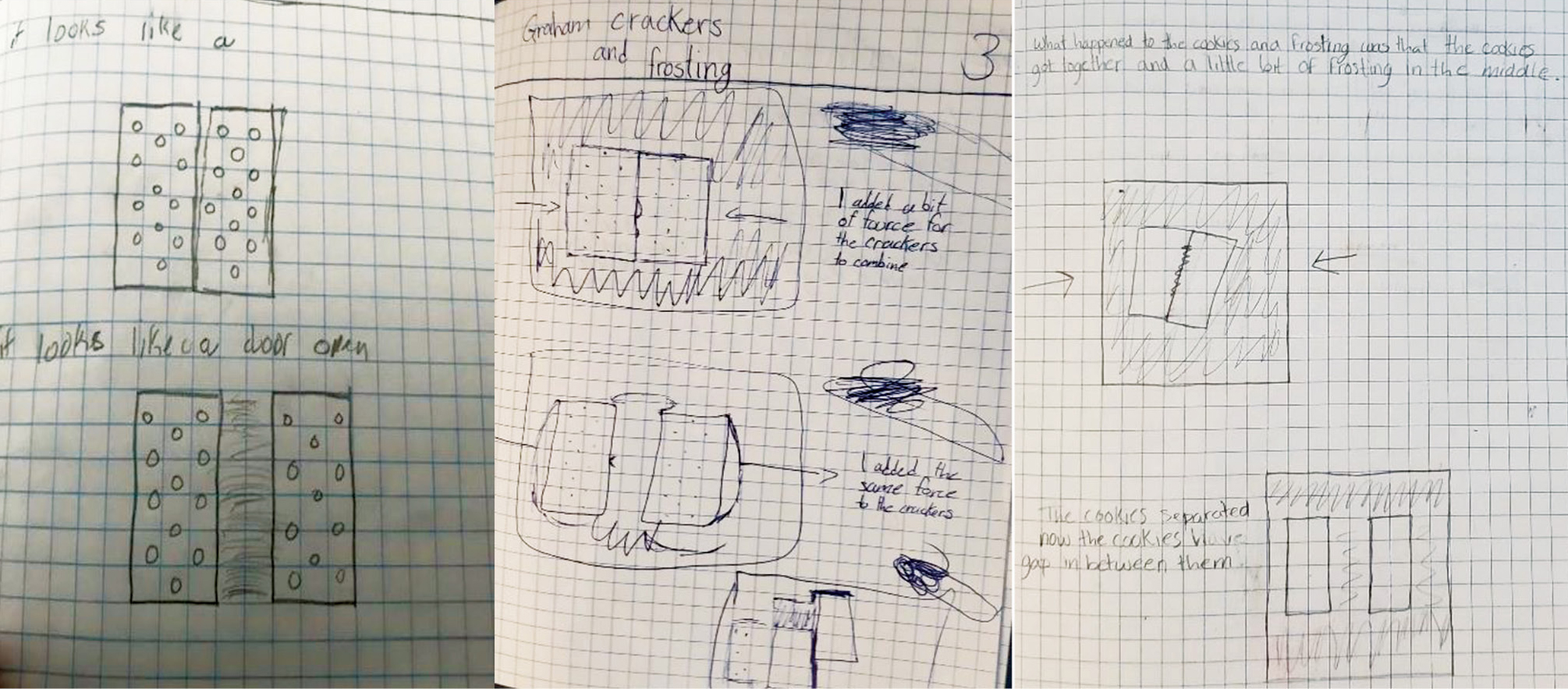feature
Teaching Plate Tectonics to Diverse Students Using the 5E and 5R Instructional Model
Science Scope—September/October 2022 (Volume 46, Issue 1)
By Naomi Gutierrez, Molly H. Weinburgh, and Cecilia Silva

CONTENT AREA Earth and Space Science
GRADE LEVEL 8
BIG IDEA/UNIT Plate tectonics
ESSENTIAL PRE-EXISTING KNOWLEDGE Understanding that change happens
TIME REQUIRED 50 minutes
COST Approximately $10 for a class of 25
SAFETY Aprons and goggles; instructions to not consume food materials or lick fingers; food allergies considered
I (Naomi) teach at a sixth-grade center in a large district with a school population classified as 92% at risk of noncompletion, 71% English language learners, 93% Hispanic, and 5% African American. Thus, when planning a lesson, I consider not only the district’s scope and sequence and the Next Generation Science Standards’ three dimensions (content, crosscutting ideas, and practices; NGSS Lead States 2013), but also the needs of my language learners. Since I began teaching in 2009, I have grown in my ability and confidence in creating the type of language and science-rich learning environment called for by the NGSS for the emergent multilingual learners (EMLs) that enroll in my classroom. In addition, I organize my room with students seated and working in groups of four with well-defined management strategies in place.
Having mainly EMLs in my classroom, my thoughts as I begin to plan any unit focus on how to support communication. Therefore, I envisage the language needed to be successful with the content as well as the language that students will bring to the lesson. Two helpful resources are Instructional Sequence Matters: Grades 6–8 (Brown 2018) and Supporting Multilingual Learners in Science (Weinburgh, Silva, and Smith 2019). The first outlines the 5E Learning Cycle for engaging in active learning, and the second provides a framework for supporting language and conceptual development in EMLs. I intertwine the 5R Instructional Model (replace, repeat, reveal, reload, reposition; see Figure 1) with the 5E Learning Cycle (engage, explore, explain, expand, evaluate; see Table 1) as often as I can.

The 5R Instructional Model as a nonlinear framework consisting of five interwoven features used to facilitate the inclusion and teaching of hybrid language modes to facilitate meaning making within science lessons (see Supporting Emergent Multilingual Learners in Science by Weinburgh, Silva, and Smith 2019).
For my students to participate in sciencing—a term I use to remind them that they are engaged in a science investigation—I must consider ways to scaffold the language they will use while constructing meaning throughout the lesson. I begin by identifying the key understandings students must develop from the lesson. Then I consider the background knowledge and language students might bring into the lesson as well as the ways to scaffold the language I anticipate they will need to fully engage in the learning. Using the 5R Instructional Model, I plan the moves I must enact to help students develop and use the language required to communicate these new understandings. Different from strategies I used earlier in my teaching (e.g., frontloading vocabulary and language support), I now consider ways I can create language-learning opportunities within the context of the lesson.
Core idea—plate tectonics
Plate tectonics is the unifying theory that explains the past and current movements of the rocks at the Earth’s surface (NGSS Core Idea MS-ESS2-2). I launch my plate tectonics lesson with an experiential event that models plate movement because it gains student attention and allows them to begin thinking and talking about new content using informal language. This experience helps students visualize the way plates move and the consequences of these movements.
Engage
We begin by brainstorming the land formations that the students know. Using student discussion, I am able to determine the knowledge they bring to the topic. Some of these understandings have their origin in their past academic work (fifth-grade standards), others stem from their everyday experiences. For example, I know that students were exposed to the idea of the Earth’s surface constantly changing and geological landforms caused by weathering and erosion in fifth grade. I also know that some students will have personal experience of the topic or have read about it. During the engagement, students are encouraged to use familiar terms and/or draw representations of landforms (mountain/hill, valley, meadow). Brainstorming provides a list of visible landforms. During this part of the lesson, students are mainly evaluating and communicating information (NGSS Science and Engineering Practice #8). During the engage, I provide technical terms to replace the more common terms (e.g., valley becomes canyon).
Explore and explain minicycles
The students then use a dynamic model (NGSS Science and Engineering Practice #2) to explore how these formations are created. For the next 40 minutes, they are afforded the opportunity to learn through a series of explore/explain investigations. The plate tectonic experience that I use is very visual and utilizes graham crackers and whipped toppings to model what happens as the crust moves along the mantle. An example of the lesson can be found at various sites by googling “plate tectonics graham cracker lab.” Because the plate tectonics experience uses familiar materials, students often do not realize that they are sciencing. Although the materials are food items found in many homes, I still require the students to use their safety goggles during each cycle. The storage and distribution of materials is easy because they are common food items.
In Cycle 1, the students manipulate the crackers through the application of NGSS Science and Engineering Practice #2 (using models). No technical language is introduced during the physical manipulation of the materials, so their selection of language lets me know what they bring to the class. As the students are EMLs, providing a space for “trying on” science discourse is important. I now make a conscious effort to give students time to talk as a way of expressing thought without judgment. Because they are allowed to use familiar language, they are more willing to “try on” and to begin sciencing. For example, when the students observe what happens when the crackers push toward each other (see Figure 2), I often hear expressions such as “the crackers caused a bump and pushed up” or “whipped topping comes up, there is a bump.” I instruct the students to move around the room to see how their “geological event” is similar to or different from those of the others. As comparisons are drawn and explanations made, I reveal the concept of convergent boundaries. After the class discussion, I write this new term on a sentence strip and place the term on the word wall.

Convergent boundary as made by moving the crackers together.
To get them back to sciencing, after revealing this new term I ask the students to replace their more general language (crackers/come together) with technical language (plates/collision) by explaining how “we will call the crackers plates and the act of them coming together collision.” I bring my hands together while I am revealing new terms as I explain that “plates that collide are called convergent boundaries and most often cause mountains and volcanoes.” I add these new words to the word wall. With this technical language comes the discourse that promotes conceptual understanding. At this point I introduce plate tectonics as the movement of Earth’s plates. Students make a journal entry to solidify their learning and create a reference to go back to later. The entry records the new language as well as drawings of each event. From this point forward, students are expected to show their understanding using the more technical language (see Figure 3).

Journal pages where three students have captured the concepts and language of the lab.
In Cycle 2, the second exploration requires the students to pull apart (separate) the crackers (see Figure 4). Because the crackers rest on the whipped topping, this activity results in a depression in the whipped topping. With this experience I reveal the technical term divergent boundary. I say, “Divergent boundaries can be remembered because you know that divide means to separate. The plates separate causing features such as the mid-Atlantic ridge.” In this way, I tie the new concept to their prior knowledge of the ocean floor. Students again make a journal entry, and new words are added to the word wall. At this point in the lesson, I stop and ask the students to remind me of what happened in the previous cycle. This gives the students an opportunity to repeat the use of concepts and language. Again, students are asked to make a journal entry.

Divergent boundary as made by moving the crackers apart.
In Cycle 3, the third exploration, I ask the students to position their crackers side by side and ask how we could move them in a way that is different than they have moved so far. The students realize the plates can slide against one another—one forward and the other backwards (see Figure 5). I know that the graham cracker/whipped topping model is less accurate when demonstrating a transform boundary because the big geological event at a transform boundary is an earthquake and we cannot see an earthquake with our crackers. However, with additional discussion, the model provides a visual of the concept. The students often say they are “shaving part of the cracker off.” Sometimes the crackers actually break apart as could happen with an earthquake. This again allows me to reveal a new term. I explain that when plates slide past each other, the fault is called a transform boundary. Students use their growing conceptual knowledge and language to discuss the kind of movement felt at transform boundaries, thus reinforcing the concept of an earthquake. Students once more make a journal entry.

Transform boundary as made by sliding the crackers across each other.
Now that they are familiar with the three boundaries, I introduce a geological term, fault. Drawing from their own experience, students often tell me that a fault is “something wrong.” Drawing on previous experiences and having thought about language in preparation for this lesson, I anticipated this answer. When words have multiple meanings, I try to contextualize them by moving them to science. I help the students with a new understanding that a “fault” is any geological boundary.
To help with language development, I ask the students to identify additional concepts from the lesson, and I write the new words on sentence strips. As a summary, I ask the students to help me rearrange the words on the word wall to show how these concepts relate to each other. I refer to terms on the wall often as they are a resource to use throughout the lesson. We always stop to make a journal entry that is a representation of the model they have just manipulated, and students again are encouraged to use these words in their journal entry. Writing about the experience helps students reposition their oral discourse to be more in line with how science is written. This can serve as a formative evaluation.
Evaluate
For a final evaluation, I ask the students to produce a PowerPoint presentation to show what they know about the three types of boundaries. As a scaffold, I give them three slides labeled as convergent, divergent, and transform. They are asked to communicate their understandings about boundaries and quickly put it on the slide. After they have substantial information, they organize it into a presentation. They can extend each slide to include pictures, diagrams, links to video, or any way of showing their understanding of the plate tectonics. In addition, they orally present to their classmates (see rubric for plate tectonics in Supplemental Materials).
Another evaluation occurs when I reload by using the words on the word wall. One of my favorite ways is to have each student select a term. They then find a classmate whose word is related (in any way) to their word (e.g., convergent and mountain). Once they have a term that is held by a partner, they give justification (NGSS Science and Engineering Practice #7) for selecting that term. This requires the NGSS practice of argumentation (reposition) as students present a case for the pairing (e.g., convergent with mountain or convergent with divergent). This forces students to think conceptually and to use specific terms in communicating information (NGSS Science and Engineering Practice #8). The next day I reload the concepts and words by drawing a representation of the event (see Figure 6).

Reloading using words and visuals.
Final reflection
Like many science teachers, I have always recognized the need to support language development in the classroom. Over the years, as I have more closely understood the relationship between language and conceptual development, I have moved away from providing this support through frontloading vocabulary and isolated language instructional strategies. While in my current teaching practices I continue to plan for and explicitly focus on linguistic development, I do so within the context of the lesson. Therefore, while I am planning, I am careful to include the 5Rs throughout my 5E lessons. As the students develop deeper word meaning, they are able to take ownership and communicate their understanding of the concepts and ideas. •
Supplemental Materials
Rubric for plate tectonics—https://bit.ly/3P13Bdv
Connecting to the Next Generation Science Standards—https://bit.ly/3oPyKGf
Molly H. Weinburgh (m.weinburgh@tcu.edu) is a professor, the director of Andrews Institute, and the Andrews Chair of Mathematics and Science Education at Texas Christian University in Fort Worth, Texas; Cecilia Silva is Professor Emeritus in the College of Education at Texas Christian University; and Naomi Gutierrez is a sixth-grade teacher in Fort Worth, Texas.
5E Curriculum Earth & Space Science


